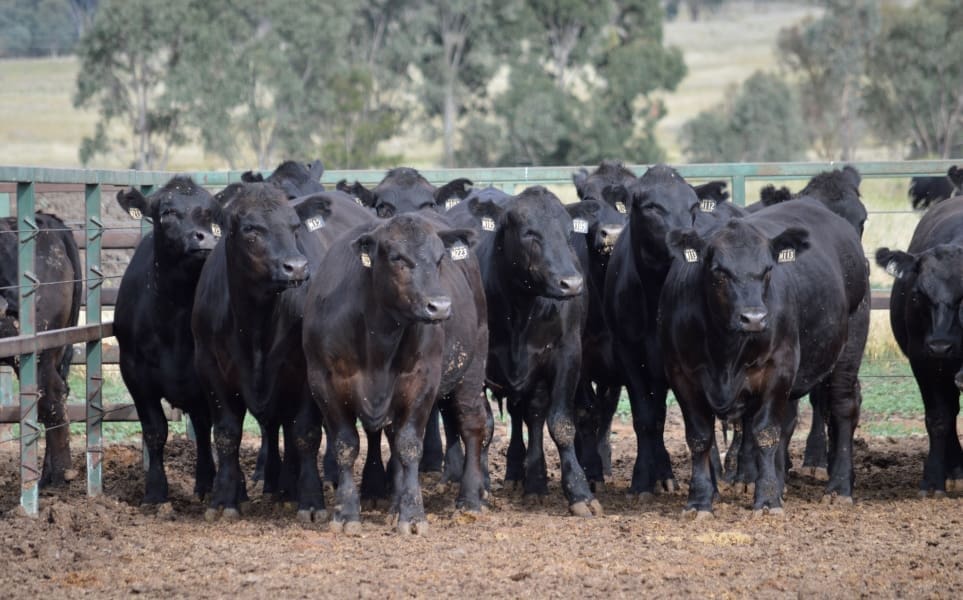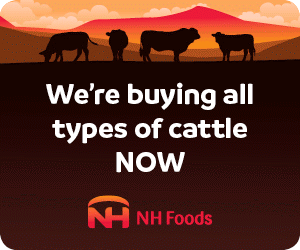
FROM humble beginnings utilising 906 calves from 35 Angus sires bred in 2010 to the latest cohort measuring performance of 8500 calves from 299 sires, the Angus Sire Benchmarking Program has come a long way in its ten-year history.
More importantly, vital data has been collected on the ASBP animals which is giving cattle breeders using Angus genetics higher accuracy Estimated Breeding Values for commercially relevant traits.
The ASBP is the flagship research and development initiative undertaken by Angus Australia, with the main aim of building a highly-effective reference population of genotypes and phenotypes on contemporary Australian Angus cattle.

Christian Duff
Angus Australia’s strategic project manager, Christian Duff, said ASBP was particularly valuable for hard-to-measure traits collected on ASBP animals in areas such as beef quality and quantity, female reproduction and immune response.
“The project data also enables effective utilisation of genomic based technologies,” he said.
“The program allows cattle breeders using Angus genetics to stay at the cutting edge of breeding technologies and rates of genetic gain for commercial production and profit.”
The ten-year milestone also coincides with the recent decision to extend the program to include Cohort 9 (2019 born calves), Cohort 10 (2020 born calves) and Cohort 11 (2021 born calves).
Combined with previous Cohorts (1-8), this will produce a reference population of more than 12,000 Angus animals from 400 Angus sires. Importantly, the progeny are genotyped and their phenotypes comprehensively measured from birth to slaughter for steers, and from birth to first parity for heifers.
As the program outcomes flow on to the commercial beef industry, the ASBP attracts co-funding support through the MLA Donor Company scheme. Research and supply chain partnerships are also important for a program of this scale and complexity.
“Partnerships are critical to ASBP. This includes valued support from Angus Australia members nominating bulls, cooperator cow herd owners, supply chain partners such as Rangers Valley feedlot, Vetoquinol for artificial reproduction advice and genotyping companies,” Mr Duff said.
“Without their support the ASBP would basically not happen. Collaboration with research organisations is also vital and involves groups such as the University of New England, CSIRO, NSW DPI and ALMTech.”
“The history of ASBP data gathered has moved the needle on genetic gain to a stage where bulls we can buy this year, simply weren’t available 10 years ago”
Chair of the ASBP consultative committee, Stephen Chase from Waitara Angus, said the ASBP had benefited the industry in many ways, helping to ensure that Breedplan is a tool breeders can trust.
“It has provided a quality reference population that has phenotypes for many traits. It has provided a population to study new, harder to measure traits including immune competency, retail beef yield, feed efficiency, emissions, structure and other added extras,” he said.
“As members, we get to use the wealth of information gained through the ASBP to make more informed breeding decisions. Any sire that has gone through the program gains in accuracy of his EBVs, with benefits through his pedigree, DNA profile and progeny as well.”
“The ASBP has been a great tool to benchmark my stud and commercial herds,” Mr Chase said.
“As a bull owner, it has provided me with great linkages and therefore increased the usefulness of data submitted from my stud herd. The measurements and studies going on within the program are always improving, always adapting, and all that information and knowledge goes directly to improving data collection methods, data analysis and EBVs for the whole Australian Angus breed.”
 Cow herd representative on the ASBP consultative committee Richard Puddicombe from Paraway Pastoral Co’s Burindi Station, said the ASBP provided good analysis of local and overseas sires and compares their genetic worth on a level playing field.
Cow herd representative on the ASBP consultative committee Richard Puddicombe from Paraway Pastoral Co’s Burindi Station, said the ASBP provided good analysis of local and overseas sires and compares their genetic worth on a level playing field.
“Not only does this provide good information for commercial and stud breeders, researchers are able to gather and interpret valuable information that is collected as well,” he said.
“Validation of genetic traits provided in this programme has helped make Angus BreedplanEBVs very reliable. This means breeders can set and reach breeding targets and outcomes in a far more reliable way.”
“This history of ASBP data gathered has really moved the needle on genetic gain to a stage where bulls we can buy this year, simply weren’t available ten years ago. Stud breeders are now also achieving good success in breeding desirable but antagonistic traits into Angus animals, which is amazing,” Mr Puddicombe said.
Sire nominations for next cohort open
Bull nominations are open for the next joining round of the Angus Sire Benchmarking program to produce the Cohort 10 progeny. This joining program will take place in September to November of 2019.
Forty Angus bulls are expected to be selected for the 2019 joining team with the aim to join each bull to at least 50 Angus cows by fixed-time AI.
The bull selection criteria will be based on genetic diversity, breeding values/indexes and their relationship to sires already used in previous Cohorts of the ASBP. Preference will also be given to early nominations.
Benefits of bulls entering the ASBP
- Close genetic linkage to the ASBP reference population ensures research outcomes, particularly in the genomics area, will have high relevance to your herd.
- Be involved in cutting edge Angus research in areas such as genomics, eating quality image technology and testing for immune competence.
- High density DNA profiles will be stored for current use (e.g. sire verifications, single-step BREEDPLAN analysis) and future research.
- Receive high accuracy EBVs, particularly for hard to measure traits such as net feed intake, abattoir carcase data and female reproduction.
- Receive progeny average values and sire ranking from within the ASBP, including traits such as MSA Index and MSA Marble Score. Involvement in Australia’s largest beef cattle progeny test program including large contemporary groups.
For information regarding the key steps of the ASBP bull nomination process, costs and other considerations, click here.
Source: Angus Australia
